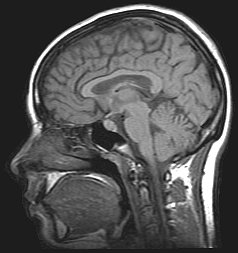
Vitamin C has no real benefit when it comes to fighting cold and flu
Vitamin C
When it comes to flu, one person in three believes that taking vitamin C can cure the flu virus. In 2007, the authors of a review of 30 trials involving 11,000 people concluded that, “regular ingestion of vitamin C has no effect on common cold incidence in the ordinary population”. A daily dose of vitamin C did slightly reduce the length and severity of colds.
“Studies found that vitamin C offers a very, very limited benefit,” says Dr Joshivice-chair of the Royal College of GPs. “I wouldn’t recommend it.”
Echinacea
The root, seeds and other parts of echinacea plants are used in herbal remedies that many people believe protect them against colds. There have been several studies into echinacea’s effect, but no firm conclusions.
A review of trials involving echinacea showed that, compared with people who didn’t take echinacea, those who did were about 30% less likely to get a cold. However, the studies had varying results and used different preparations of echinacea. It’s not known how these compare with the echinacea in shops.
This review also showed that echinacea did not reduce the length of a cold when taken on its own.
Zinc
There is some evidence that taking zinc lozenges, syrup or tablets may reduce how long a cold lasts.
A 2011 Cochrane review of studies into zinc and the common cold suggests that taking zinc supplements within a day of the symptoms starting will speed up recovery from a cold and lessen the severity of symptoms. Long-term use of zinc isn’t recommended as it could cause side effects such as vomiting and diarrhoea. More research is required to find out the recommended dose.
There has also been research into nasal sprays containing zinc. “Some people believe that the zinc lines the mucosa [the lining of the nose] and stops a cold virus attaching itself to the nose lining,” says Dr Joshi. “Unfortunately, this has been found to be no more effective than a placebo.”
Getting cold or wet
The only thing that can cause a cold or flu is a cold or flu virus. Getting cold or wet won’t give you a cold. However, if you are already carrying the virus in your nose, it might allow symptoms to develop.
A study at the Common Cold Centre in Cardiff found that people who chilled their feet in cold water for 20 minutes were twice as likely to develop a cold as those who didn’t chill their feet.
The authors suggest that this is because some people carry cold viruses without having symptoms. Getting chilled causes blood vessels in the nose to constrict, affecting the defences in the nose and making it easier for the virus to replicate.
“Getting a cold from going out in the cold or after washing your hair is a myth,” says Dr Joshi. “Colds are common. If the virus is already there and then you go out with wet hair and develop symptoms, it’s common to think that is what caused it.”
So what does work?
The flu vaccine can prevent you from catching flu. Apart from that, the best way to protect yourself from colds and flu is to have a healthy lifestyle.
“Eat a healthy diet, take regular exercise and drink plenty of warm drinks in the winter months,” says Dr Joshi. “The important thing to remember is that most people are going to catch a cold in winter anyway, because there is no effective cure for cold viruses.”
Washing your hands
Cold and flu viruses can be passed through tiny droplets of mucus that are sneezed or coughed out into the air by an infected person, and breathed in by another person. If an infected person sneezes into their hand, and then touches an object (such as a doorknob, or railing on a train) the virus can pass from the object to the next person who touches it. By washing your hands, you will be getting rid of any viruses you’ve picked up on them.
Avoid touching your nose and eyes
Cold and flu viruses can enter your body through the eyes and nose. If you have any infected droplets on your hands, and you touch your eyes or nose, you can pass the virus into your system. By not touching your nose and eyes, you’ll reduce your chances of catching a virus.
Need to stock up on cold and flu remedies? Here is a map of pharmacies in and around Preston.
Click here for more NHS advice about staying healthy this winter.







